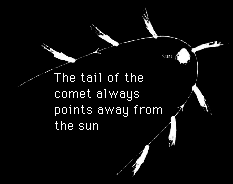This is a drawing of how a comet behaves as it passes by the sun.
Click on image for full size
JPL
When a comet comes close to the Sun
When comets are kicked out of the Oort Cloud, they begin a passage into the solar system, spinning and tumbling as they come.
As the comet comes closer to the sun, near the region of space occupied by Mars it becomes warm enough for the comet to begin to evaporate. When evaporation begins, the coma and tail form.
This picture shows that, once the tails forms, it always points away from the sun. That means that the tail will point in different directions at different places in the comet's orbit.
The same comet will make repeated trips to the sun only if the path it follows is special.
You might also be interested in:
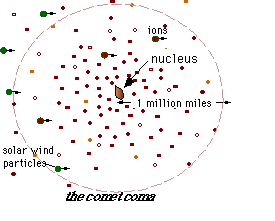
As the ices of the comet nucleus evaporate, they expand into a large cloud around the middle part of the comet. This cloud, called the coma, is the atmosphere of the comet. It can extend for millions of
...more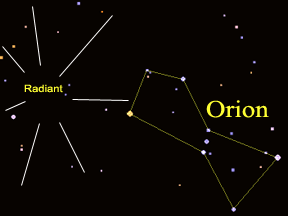
Meteor showers are times when you can see a lot of meteors in one night. There are several different meteor showers. Each meteor shower happens at the same time every year. There is a meteor shower in
...more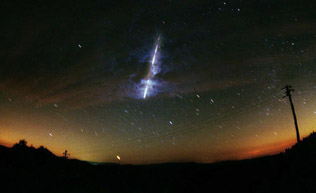
The Leonid meteor shower is one of several major meteor showers that occur on roughly the same date each year. The Leonids typically "peak" (are at their greatest level of activity) in mid to late November.
...more
Meteor showers are times when you can see a lot of meteors in one night. There are several different meteor showers. Each meteor shower happens at the same time every year. There is a meteor shower in
...more
Meteor showers are times when you can see a lot of meteors in one night. There are several different meteor showers. Each meteor shower happens at the same time every year. There is a meteor shower in
...more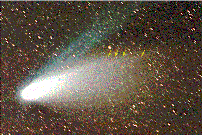
Comet Hale-Bopp was one of the brightest comets of all time. Astronomers witnessed the comet spew out intermittent bursts of dust. The surface seemed to be an incredibly dynamic place, with 'vents' being
...more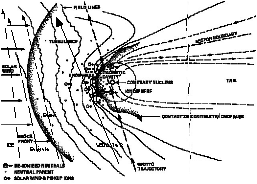
Six spacecraft flew to Halley's comet in 1986. There were two spacecraft launched from Japan, named Suisei and Sakigake, and two from the Soviet Union, named Vega 1 & 2. One spacecraft, ICE, was from the
...more


